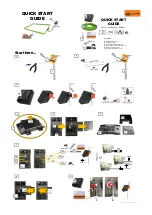
Electrical installation
Page 95
8.7.4
Cable type and design [X4]
The mentioned cable denominations refer to cables by Lapp. They have proven effective and are successfully used in many
applications. However, similar cables from other manufacturers, for example Lütze or Helukabel, may also be used.
Technical data CAN bus cable: 2 pairs of 2 twisted cores, d
≥
0.22 mm
2
, shielded, loop resistance < 0.2
Ω
/m, characteristic impedance 100-120
Ω
LAPP KABEL UNITRONIC BUS CAN; 2 x 2 x 0.22;
∅
7.6 mm, with total Cu shielding
For highly flexible applications:
LAPP KABEL UNITRONIC BUS CAN FD P; 2 x 2 x 0,25;
∅
8,4 mm, with total Cu shielding
8.7.5
Connection notes [X4]
Caution!
When cabling the servo positioning controllers via the CAN bus, make sure to observe the following
information and notes, to ensure a stable and interference-free system. Improper cabling may cause the CAN
bus to malfunction which in turn can cause the controller to shut down with an error for safety reasons.
The CAN bus provides a simple and fail-safe way of connecting all components of a system, assuming, however, compliance
with the following notes on cabling.
Figure 22:
Cabling example for CAN-Bus
The individual nodes of a network are always connected in line, so that the CAN cable is looped through from controller to
controller (see
On both ends of the CAN bus cable must be exactly one terminating resistor of 120
Ω
+/- 5 %. The item servo positioning
controller C 1-Series is equipped with an integrated terminating resistor that can be activated/deactivated with the aid of the
DIP switch “CAN TERM” that is located on the front panel (see
Shielded cables with exactly two twisted pairs must be used for cabling
Use a twisted pair for the connection of CAN-H and CAN-L
The cores of the other pair are used jointly for CAN-GND
















































